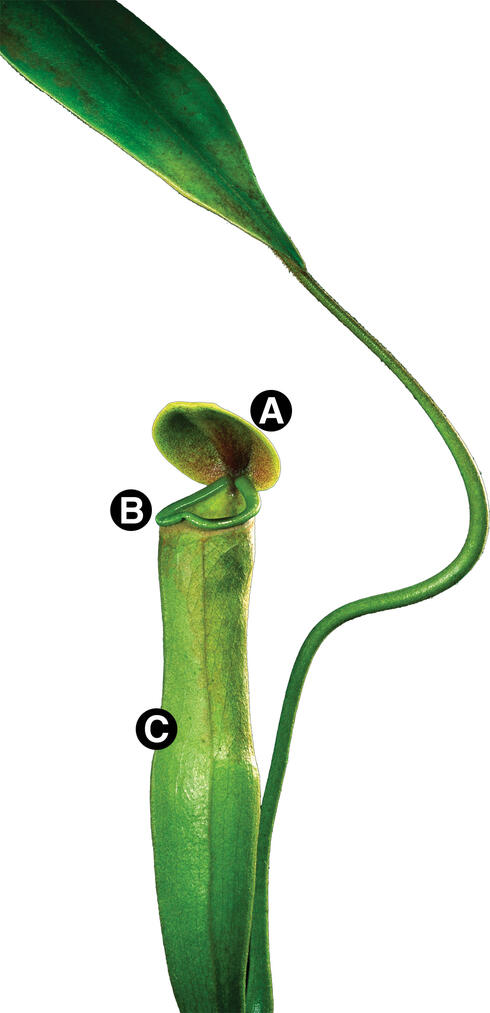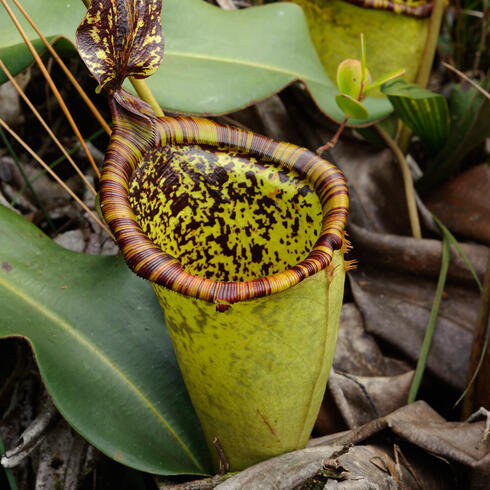ABOUT
GENUS Nepenthes
WHERE There are more than 100 species of tropical pitcher plants, found mostly in Southeast Asia—including Indonesia, Malaysia, and the Philippines—and in India and northern Australia.
STATUS Thirty-five Nepenthes species are listed as vulnerable or endangered on the IUCN Red List, while 10 are listed as critically endangered.
THREATS Overcollection and poaching for the rare plant trade; habitat destruction due to agriculture and human development; and drought caused by climate change.
Nepenthes khasiana
- Lid (operculum)
Keeps out rainwater and ensures the plant’s digestive liquid doesn’t get diluted; may contain nectar glands that help lure in prey
- Rim (peristome)
Slippery and waxy when wet, causing insects to tumble into the pitcher’s deep cavity
- Pitcher cup
Funnel-shaped or tubular; filled with a sticky or watery digestive fluid that breaks down prey, much like the bacteria in our stomachs
ABOUT
GENUS Nepenthes
WHERE There are more than 100 species of tropical pitcher plants, found mostly in Southeast Asia—including Indonesia, Malaysia, and the Philippines—and in India and northern Australia.
STATUS Thirty-five Nepenthes species are listed as vulnerable or endangered on the IUCN Red List, while 10 are listed as critically endangered.
THREATS Overcollection and poaching for the rare plant trade; habitat destruction due to agriculture and human development; and drought caused by climate change.
Nepenthes khasiana
- Lid (operculum)
Keeps out rainwater and ensures the plant’s digestive liquid doesn’t get diluted; may contain nectar glands that help lure in prey
- Rim (peristome)
Slippery and waxy when wet, causing insects to tumble into the pitcher’s deep cavity
- Pitcher cup
Funnel-shaped or tubular; filled with a sticky or watery digestive fluid that breaks down prey, much like the bacteria in our stomachs






